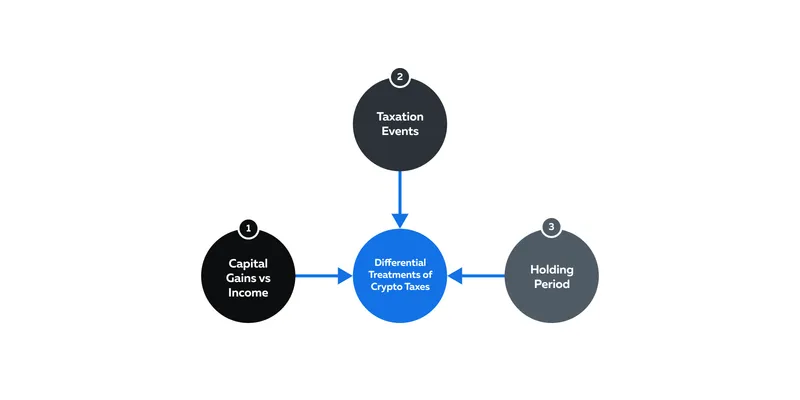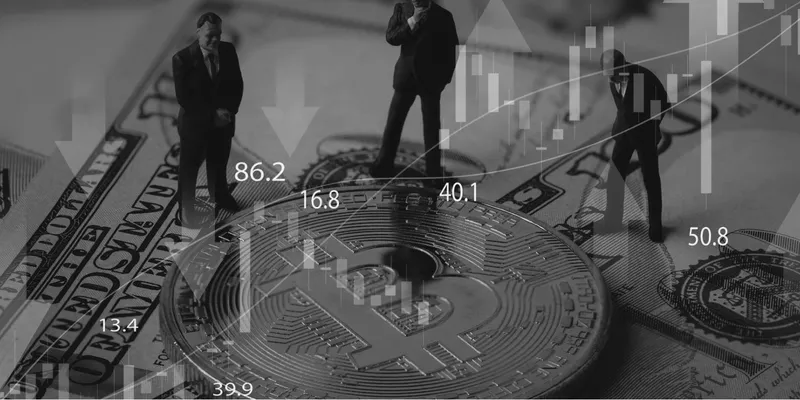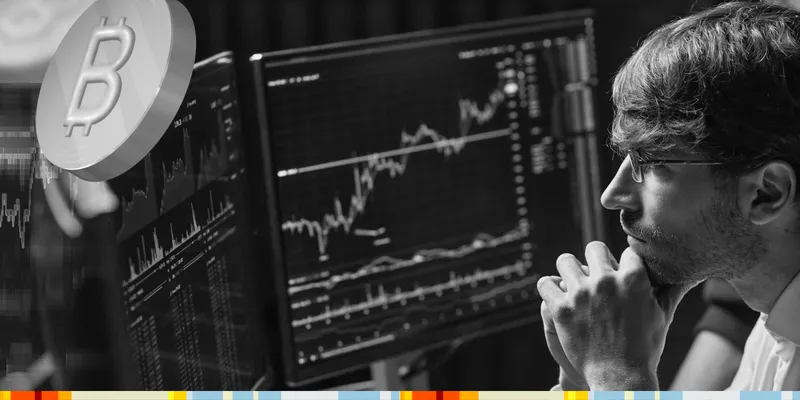

December Trading
Deals Are Live!
Save on Global+, data access,
and add-ons.
See All December Deals

Black Friday
Nov 28-Dec 31
26 days : 17 hours
50% OFF Global+ Quarterly
+ 50% OFF Data (3 months)

Cyber Monday
Dec 1 - Dec 31
26 days : 17 hours
60% OFF Global+ Monthly
+ Data (1 month)

Add-on Deals
Dec 1 - Dec 31
26 days : 17 hours
50% OFF
Add-ons

New Year Sale
Dec 26 - Jan 1
20 days : 17 hours
30% OFF Global+ Lifetime
*Data not included
Crypto
December 25, 2024
SHARE
Understanding the Crypto Market: Overcoming Its Challenges
Every financial world has its unique language. In the crypto market,
‘whales’ don’t live in the ocean, and ‘HODL’ isn’t a typo. To execute
profitable trades, you must learn the language.
This article simplifies baffling jargon and guides you on how to handle the
crypto market’s volatility, manage risks, and deal with taxation
complexities. We will also understand the need for appropriate tools,
advanced security measures and different regulatory frameworks. So, let’s
begin.
Navigating the Challenges of Crypto Markets
The only thing constant in the crypto space is volatility. This is a popular
saying among traders. And, rightly so!
The infamous crypto market volatility poses significant challenges, but it
also presents opportunities for traders. They can capitalize on this
volatility by:
-
Understanding the factors influencing price movements
-
Managing their emotions
-
Employing technical analysis tools
Let’s understand crypto volatility in depth.
Market Volatility
Cryptocurrency markets are highly dynamic and difficult to predict. Crypto
prices experience rapid and sometimes extreme price fluctuations, which
happen due to market shifts:
-
Regulatory News:
-
Government regulations and policies impact crypto prices.
-
Announcements of bans, restrictions, or supportive regulations
from different countries often trigger significant market
movements.
-
-
Technological Advancements:
-
Upgrades, new features, or vulnerabilities discovered in
blockchain technology or specific cryptocurrencies swiftly
influence market sentiment and consequently lead to price
fluctuations.
-
-
Perceived Future Utility:
-
The perceived future utility and the crypto prices have a direct
relationship. -
Increased acceptance and use of cryptocurrencies in mainstream
industries or by influential companies can create surges or drops in
value.
How Psychological Aspects Impact Crypto Trading
Emotions often run high during extreme market movements. This compels
traders to make
impulsive decisions
. However, traders must remain calm and:
-
Avoid panic-selling,
-
Escape FOMO (Fear Of Missing Out), and
-
Stick to their pre-defined trading strategies.
How to Combat Volatility Through Technical Analysis
Most traders perform technical analysis to understand:
-
Market trends
-
Prevailing & emerging patterns, and
-
Potential entry or exit points.
By gaining such a deep understanding, traders can easily combat market
volatility. The usage of market analysis tools like Bookmap provides
visualizations that aid traders in comprehending order book data. This gives
them a competitive edge and allows them to gauge market depth and price
action in real time.
Security Concerns and Best Practices
Almost since its inception, crypto-related hacks and frauds have been a
significant concern. They have resulted in substantial losses for investors.
According to the
CipherTrace Cryptocurrency Anti-Money Laundering Report March 2023
, crypto losses reached $383 million due to seven major hacks/exploits.
These incidents emphasize the immediate need for robust security measures.
Hot and Cold Storage
Both storage facilities are a kind of crypto wallet. See the table below:
|
Parameters |
Hot Storage |
Cold Storage |
|
Meaning |
Hot wallets are connected to the internet and are |
Cold wallets, like hardware wallets or paper wallets, |
|
Pros |
Easy accessibility and suitable for active trading. |
High security due to offline storage. |
|
Cons |
More vulnerable to cyberattacks. |
Inconvenient for immediate transactions. |
What are Some Advanced Security Measures?
Traders can employ the following measures:
-
Multi-Signature Wallets: These wallets offer a high level of
security by incorporating:
-
Additional layers of authentication
-
The necessity of multiple private keys for transaction authorization
-
Backup Solutions: Traders are strongly advised to regularly back up
their wallets and keys. This precaution helps safeguard against data
loss in case of hardware failure or unexpected circumstances.
Additionally, the traders should:
-
Perform routine checks on their accounts and devices
-
Keep wallets and security software updated to guard against
potential vulnerabilities -
Stay informed about the ever-evolving threat landscape and new
security measures
Understanding Regulatory and Legal Complexities
The absence of uniform crypto regulations worldwide poses challenges and
uncertainties for global investors and businesses. Significant regulatory
changes can lead to:
-
Abrupt price movements
-
A shift in the perception of cryptocurrencies
To navigate regulatory and legal complexities effectively, investors and
businesses need a nuanced understanding of crypto space. Let’s understand
the changing regulatory landscape in detail.
The Shifting Landscape of Crypto Regulations
Cryptocurrency regulations vary significantly across countries. This
variation makes it complex to operate in the crypto sphere. Some nations
have embraced cryptocurrencies, while others have imposed stringent
regulations or outright bans. Examples include:
-
Countries like Switzerland, Malta, and Singapore have:
-
Adopted more welcoming stances,
-
Provided clear guidelines and
-
Created favorable environments for crypto-related businesses.
-
-
Whereas countries like China and India have imposed bans or
restrictions that cause fluctuations in the market due to their
significant user bases and influence.
One notable scenario demonstrating the impact of regulatory shifts was
China’s crackdown on cryptocurrency activities.
|
September, 2017 |
September, 2021 |
|
|
Tax Implications for Crypto Traders
Crypto taxation is ambiguous. The decentralized and relatively novel nature
of cryptocurrencies has made it complex for tax authorities to establish
clear and consistent guidelines. This lack of uniformity across
jurisdictions creates confusion for traders when it comes to taxation.
How Crypto Profits are Treated in Different Jurisdictions
Taxation of crypto profits varies based on the jurisdiction. Below are some
key differential treatments:

-
Capital Gains vs. Income:
-
In many regions, profits from cryptocurrency are treated as
either capital gains or income. -
Capital gains are typically taxed at different rates than
regular income. -
This distinction depends on factors such as:
-
The frequency of trading
-
The intent behind the transactions
-
-
-
Taxation Events:
-
Different countries have varying definitions of taxable events
related to cryptocurrencies. -
Some tax when crypto is sold for fiat, while others consider
crypto-to-crypto trades as taxable events.
-
-
Holding Period:
-
Usually, tax rates differ based on the duration for which the
cryptocurrency is held. -
Short-term holdings are taxed differently from long-term
holdings.
-
Importance of Records and Professional Advice
Maintaining detailed transaction records is crucial for crypto traders. Such
documentation is essential for accurately reporting gains or losses to the
tax authorities. The following records must be maintained:
-
Purchase prices
-
Sale prices
-
Dates of transactions
-
Any associated fees
Additionally, given the ever-evolving nature of crypto tax guidelines,
seeking professional advice from accountants or tax experts who specialize
in cryptocurrency taxation is highly recommended.
Crypto Literacy and Risk Management
Crypto trading is a high-stakes game. It is potentially lucrative but also
involves inherent risks. This makes practicing caution and employing risk
management strategies pivotal. The crypto traders must:
-
Invest only what they can afford to lose
-
Diversify portfolios
-
Use stop-loss orders, and
-
Avoid impulsive decisions based on market hype
Additionally, crypto traders should use advanced market analysis tools.
These offer visual representations of market data and help in making
informed decisions.
Crypto Jargons and Concepts
The world of cryptocurrency is teeming with unique terminologies. Given its
novelty and complexity, most newcomers find it daunting. Here’s a
beginner-friendly glossary to help you get started:
|
Common Terminologies |
Meaning |
|
Altcoins |
|
|
Fiat |
|
|
Whales |
|
|
FOMO (Fear Of Missing Out) |
|
|
HODL |
|
|
Initial Coin Offering |
|
|
Wallet |
|
Risk Management in Crypto Trading
Crypto traders and investors must adopt a proactive approach to risk
management. This not only helps in safeguarding capital but also mitigates
potential losses. Let’s understand some common
risk management
techniques:
-
Investing What You Can Afford to Lose
-
Due to the market’s high volatility, it’s essential to allocate
an amount that, if lost, wouldn’t significantly impact your
financial stability.
-
-
Diversification and Stop-Loss Orders
-
Traders must spread investments across different
cryptocurrencies. -
A diversified portfolio offsets loss in one asset with gains in
another.
-
-
Stop-Loss Orders
-
These orders allow traders to predetermine a price at which an
asset should be sold to limit potential losses. -
Implementing stop-loss orders protects against steep declines.
-
-
Avoiding Hype-Based Decisions
-
Cryptocurrency markets are influenced by hype and speculation.
-
Avoid making impulsive decisions based solely on:
-
Market hype or
-
Fear of missing out (FOMO)
-
-
How Does Bookmap Help in Crypto Risk Management?

Bookmap provides visualizations of order book data. This aids traders in
observing:
-
Market depth and
-
Price action in real-time.
Using these observations, traders can understand the market sentiments,
potential entry or exit points, and market trends.
Conclusion
The world of cryptocurrencies is challenging. Crypto traders experience
multifaceted challenges, ranging from market volatility and security
uncertainties to intricate tax considerations and a plethora of specialized
terminology.
However, within these challenges also lie opportunities for those who
approach the crypto space with resilience, caution, and an informed
strategy. The use of analysis tools like Bookmap helps traders visualize the
order book and understand the price action in real-time.
To further grasp the nuances of cryptocurrency trading compared to other
markets, be sure to check out our detailed analysis of
‘How
Crypto Trading Differs From Other Types of Trading’. It’s a great
resource to complement your growing understanding of the dynamic market.
